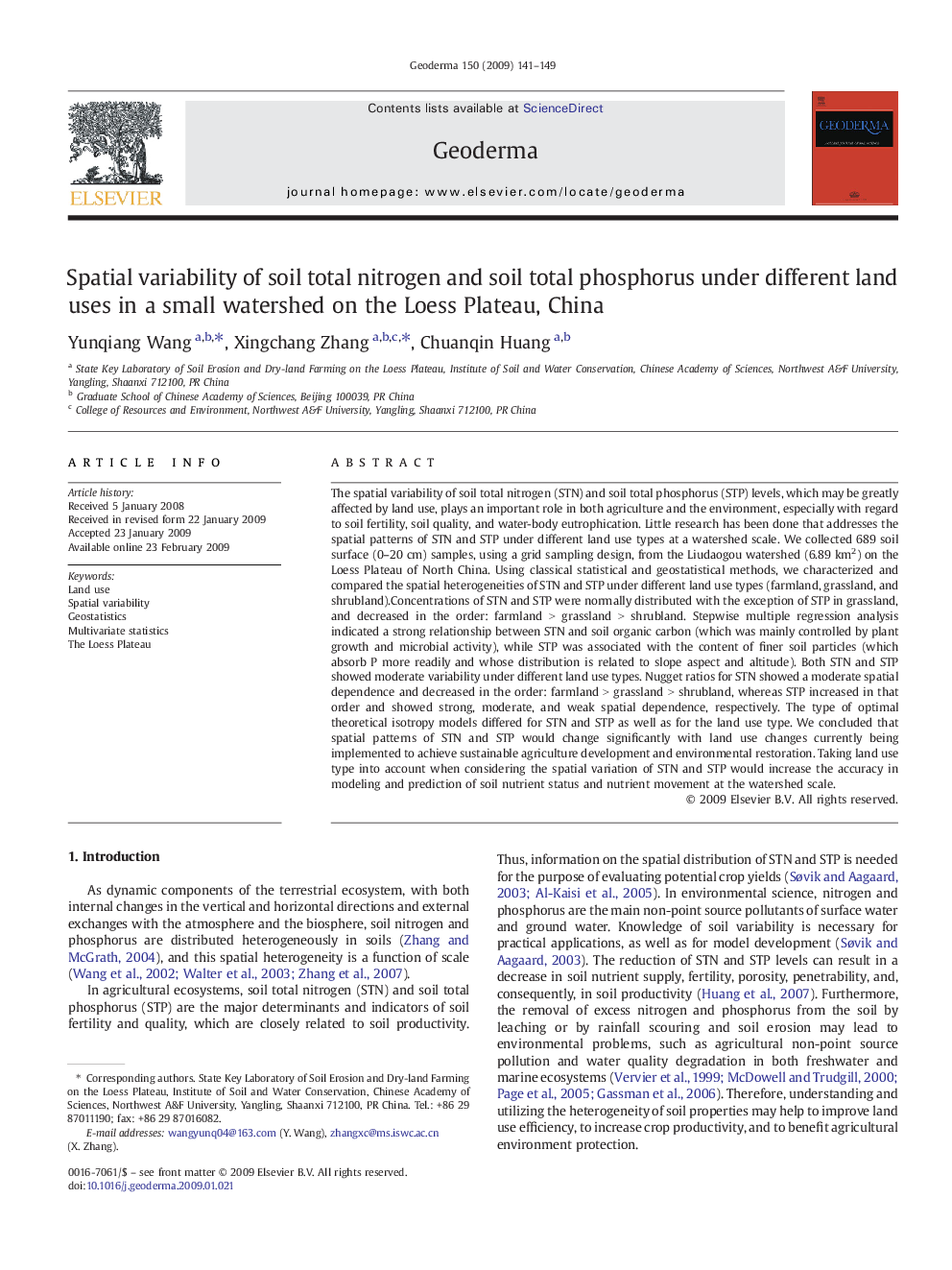| Article ID | Journal | Published Year | Pages | File Type |
|---|---|---|---|---|
| 4574758 | Geoderma | 2009 | 9 Pages |
The spatial variability of soil total nitrogen (STN) and soil total phosphorus (STP) levels, which may be greatly affected by land use, plays an important role in both agriculture and the environment, especially with regard to soil fertility, soil quality, and water-body eutrophication. Little research has been done that addresses the spatial patterns of STN and STP under different land use types at a watershed scale. We collected 689 soil surface (0–20 cm) samples, using a grid sampling design, from the Liudaogou watershed (6.89 km2) on the Loess Plateau of North China. Using classical statistical and geostatistical methods, we characterized and compared the spatial heterogeneities of STN and STP under different land use types (farmland, grassland, and shrubland).Concentrations of STN and STP were normally distributed with the exception of STP in grassland, and decreased in the order: farmland > grassland > shrubland. Stepwise multiple regression analysis indicated a strong relationship between STN and soil organic carbon (which was mainly controlled by plant growth and microbial activity), while STP was associated with the content of finer soil particles (which absorb P more readily and whose distribution is related to slope aspect and altitude). Both STN and STP showed moderate variability under different land use types. Nugget ratios for STN showed a moderate spatial dependence and decreased in the order: farmland > grassland > shrubland, whereas STP increased in that order and showed strong, moderate, and weak spatial dependence, respectively. The type of optimal theoretical isotropy models differed for STN and STP as well as for the land use type. We concluded that spatial patterns of STN and STP would change significantly with land use changes currently being implemented to achieve sustainable agriculture development and environmental restoration. Taking land use type into account when considering the spatial variation of STN and STP would increase the accuracy in modeling and prediction of soil nutrient status and nutrient movement at the watershed scale.
